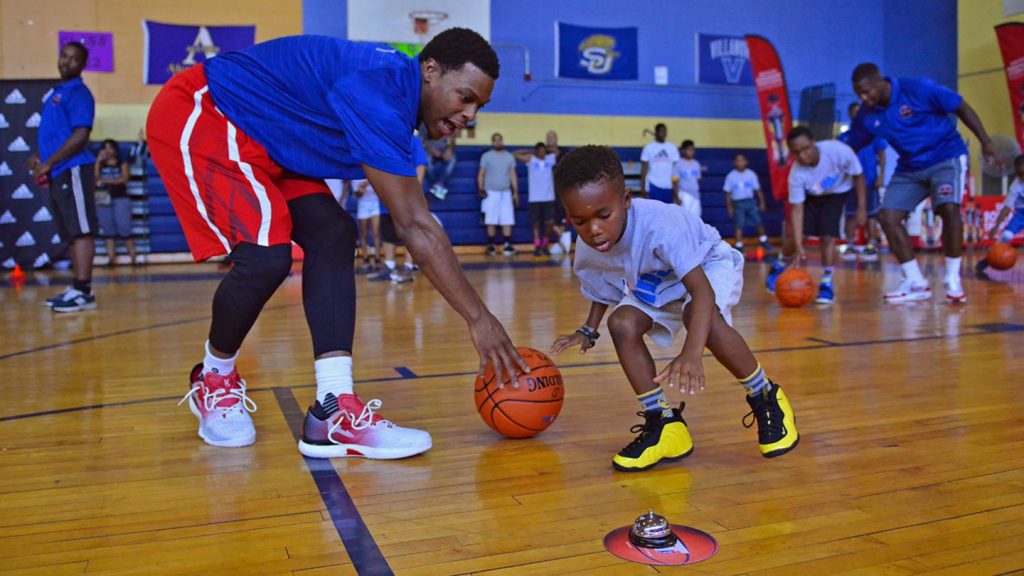Youth sports play a critical role in the development of young individuals, offering not only physical benefits but also teaching invaluable life lessons like teamwork, discipline, and resilience. However, the rising costs associated with sports participation can limit access for many children across the United States. This is where federal grants for youth sports in the USA come into play, providing financial assistance to organizations, schools, and communities to make sports more accessible to all youth, regardless of socio-economic background.
Understanding Federal Grants for Youth Sports in the USA
Federal grants are essentially financial awards provided by the U.S. government to support specific initiatives. In the realm of youth sports, these grants aim to:
Enhance Access: By funding programs that reduce or eliminate fees for participation, ensuring that financial constraints do not bar children from engaging in sports.
Improve Facilities and Equipment: Grants might fund the construction, renovation, or maintenance of sports facilities, or the purchase of necessary equipment.
Promote Health and Fitness: Encouraging physical activity among youth through organized sports programs.
Support Skill Development: Offering opportunities for coaching, training, and skill enhancement.
Key Programs for Federal Grants for Youth Sports in the USA
Several federal programs have historically supported youth sports, but here are some of the most notable:
National Youth Sports Strategy (NYSS): While not a direct funding program, NYSS by the U.S. Department of Health and Human Services (HHS) promotes youth sports engagement, setting a framework for federal support in increasing sports participation.
Community Development Block Grant (CDBG): Though primarily aimed at community development, CDBG funds can be used for recreational facilities, including those for youth sports, particularly in low-income areas.
Land and Water Conservation Fund (LWCF): This fund provides grants for the acquisition and development of public outdoor recreation areas, which can include sports facilities.
Carol M. White Physical Education Program (PEP): Administered by the U.S. Department of Education, PEP grants support physical education programs, including after-school sports activities.
Latest Numbers and Impact of Federal Grants for Youth Sports in the USA
Funding Allocated: In fiscal year 2024, the Carol M. White Physical Education Program had a budget of approximately $50 million, aimed at supporting physical education and sports programs in schools across the USA.
Number of Beneficiaries: Programs like the Every Kid Sports initiative, which isn’t directly federal but often works in tandem with federal funding strategies, have seen thousands of children benefit. For instance, in 2024, Every Kid Sports aimed to support over 50,000 children with financial assistance for sports registration.
Impact on Community: Grants have facilitated the development of numerous sports facilities, with examples like the renovation of soccer fields in underserved communities through the U.S. Soccer Foundation’s Safe Places to Play initiative, which has invested millions in such projects.
How to Apply for Federal Grants for Youth Sports in the USA
Applying for federal grants for youth sports in the USA involves several steps:
Identify the Right Program: Different grants have different focuses – some might be for facility improvements, others for direct program funding. Websites like Grants.gov or specific agency sites can help you find relevant programs.
Eligibility Check: Most federal grants have strict eligibility criteria. Organizations must often be nonprofit, have a 501(c)(3) status, or be governmental bodies.
Prepare Your Application for Federal Grants for Youth Sports in the USA
Narrative: Explain the need, your goals, and how the grant will benefit youth.
Budget: A detailed budget showing how funds will be spent.
Impact Assessment: How will success be measured? What’s the expected impact?
Submission: Follow the application guidelines meticulously, including deadlines and required documentation.
Follow-Up: After submission, be prepared for possible requests for more information or clarifications.
Challenges and Considerations
Competition: The demand for these grants often exceeds the available funds, making competition fierce.
Reporting and Compliance: Receiving federal money comes with the responsibility of reporting how it’s used, including outcomes and financial accountability.
Sustainability: Grants are often for specific projects or periods, meaning organizations need plans for sustainability beyond the grant period.
The Broader Impact
Federal grants for youth sports in the USA do more than just fund sports activities. They contribute to:
Community Health: By encouraging physical activity, these programs help combat obesity and related health issues among youth.
Education: Participation in sports is linked to better academic performance and lower dropout rates.
Social Equity: Ensuring that all children, regardless of economic background, have the opportunity to participate in sports promotes social inclusion.
Economic Benefits: Investment in sports can lead to local economic development through job creation for coaches, maintenance staff, etc., and by drawing community events.
The landscape of federal grants for youth sports in the USA offers a beacon of hope for communities striving to provide equitable sports access. With programs like the Carol M. White Physical Education Program, the Land and Water Conservation Fund, and partnerships with initiatives like Every Kid Sports, the government continues to support the holistic development of America’s youth. While navigating the grant application process can be complex, the potential for positive, long-lasting impact makes it a worthwhile endeavor. As these programs evolve, they not only foster athletic talent but also build stronger, healthier communities where every child has the chance to play.

